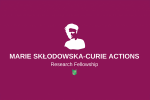Recruiting beneficiary: University of Liverpool, United Kingdom
Internal supervisors: Dr. Kieran Sharkey, Dr. Kate Baker
Brief project description: We will develop eco-evolutionary dynamics models in network-structured populations. These models will be underpinned by real ecological processes by building on competition dynamics models in ecology and epidemiology. The development of this framework is expected to provide insights into evolution in structured populations. It also permits us to represent scenarios in which evolutionary and ecological timescales overlap, particularly in pathogen evolution. We will use the models to explain pathogen evolution data in structured populations obtained under laboratory conditions, using antimicrobial resistance as a model.
Updates: Wajid has collaborated on two research problems. First, they tried to find more accurate estimates for the basic reproduction number from epidemic incidence data of observed outbreaks. Second, they attempt to consider more realistic ecological dynamics in the recently established modelling framework of eco-evolutionary dynamics on networks.
The first piece of research work addresses the issue of overestimation of the basic reproduction number estimated by fitting a class of deterministic epidemic model incidence data of observed outbreaks. They showed that by conditioning a `deterministic’ model on major outbreaks, they can more reliably estimate the basic reproduction number from an observed epidemic trajectory. The model is based on the fact that the early phase of an epidemic can be approximated by a simple birth-death process in the limit of a large population. The estimates they obtained by using this simple model outperform classical SIR type models.
The second piece of research work focuses on considering more realistic ecological scenarios in evolutionary graph theory models. This framework assumes decoupled birth, death, and migration, unlike evolutionary graph theory models where all these processes are coupled. Individuals are characterised by the number of traits and reproduce asexually. A network-structured population is assumed where individuals of population are spread over a fixed network of distinct but connected sites that can have no, one, or many individuals at a given time. The population updates in four distinct ways: birth without mutation, birth with mutation, death, and migration. The impact of network structure, competition, migration, and tolerance to group members on probability of a mutant invading the population (fixation probability) has been investigated.
Selected contributions:
Pattni, K., Ali, W., Broom, M., & Sharkey, K. (2023). Eco-evolutionary dynamics in finite network-structured populations with migration. Journal of Theoretical Biology.
Ali, W., Overton, C., Wilkinson, R., Sharkey (2024). Deterministic epidemic models overestimate the basic reproduction number of observed outbreaks. Journal of Infectious Disease Modelling, 9(3), 680-688.
Ali, W. (2024, July 15). Modeling masses’ attitude towards vaccination [Talk]. PhD Symposium, Department of Mathematical Sciences. University of Liverpool, United Kingdom.



